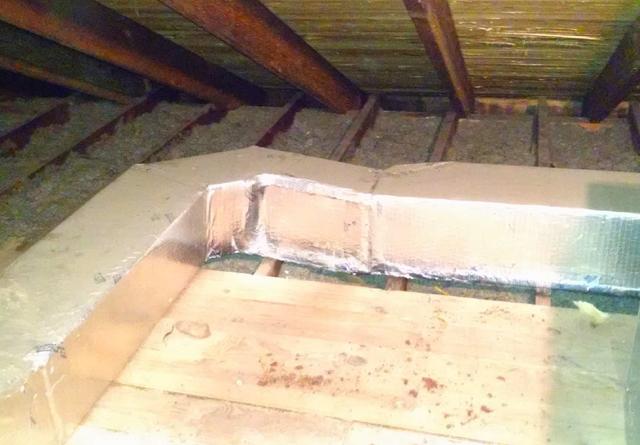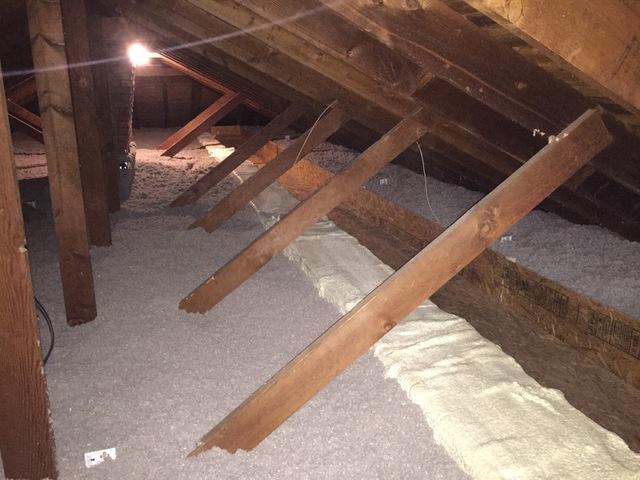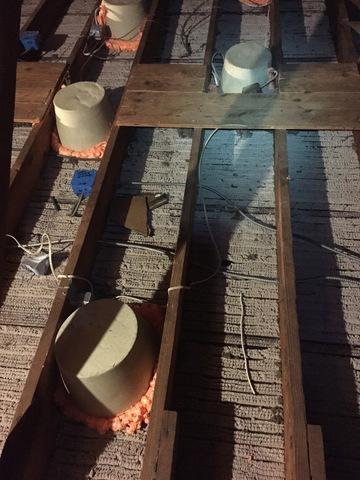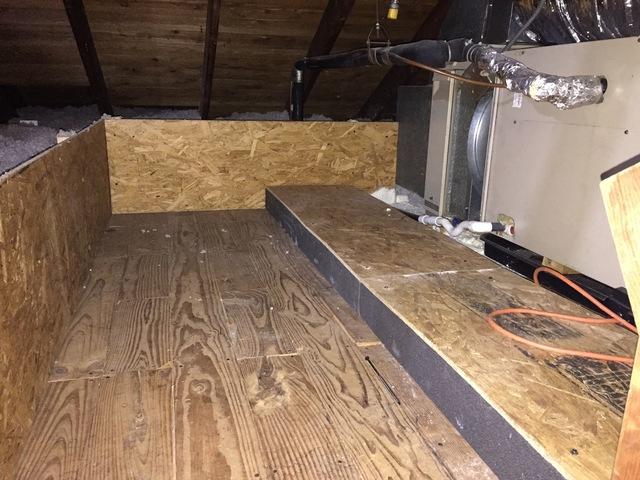
Exposed Ductwork
If non-insulated duct-work is in an attic, basement or crawl space, the duct-work will be the same temperature as these spaces. This means that your system must regulate the temperature of the duct-work before it reaches the living space.

Drafty Ductwork in the Attic
Duct-work is inherently drafty, due to all the joints between sections and fittings. Energy is wasted when temperature-controlled air escapes out of these areas or outside air is allowed in.

Encapsulated Duct
By encapsulating the duct-work in Spray Foam, the team was able to prevent air from escaping and increase the energy efficiency of the home. This protection form temperature extremes are key in maximizing the performance of the home's heating/cooling units.

Insulated Recessed Lights
While recessed lights are an attractive choice for homes, they also create gaps where temperature-controlled air can escape into the living space. To prevent this, the team covered the recessed lighting with TiteShell recessed light fixture covering. We also sealed the edges and any holes made for electrical wires with Spray Foam, to ensure an airtight seal.

Attic Access Area
Instead of blowing cellulose insulation across the entire attic, the owners wanted an access area for the machinery at the back of the attic. Pathways like this can be uninsulated and unstable. To maintain the energy efficiency of the attic and maximize home comfort, we installed a deck with SilverGlo rigid insulation beneath it. When SilverGlo™ boards are made, they are infused with graphite powder to improve insulating value. They are perfect for attic spaces!

